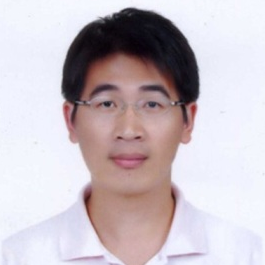Synthesis and Applications of Perovskite Nanocrystals
A special issue of Nanomaterials (ISSN 2079-4991). This special issue belongs to the section "Solar Energy and Solar Cells".
Deadline for manuscript submissions: closed (31 March 2024) | Viewed by 448
Special Issue Editor
Interests: nanostructured metal oxides; perovskite nanocrystals; conjugated polyelectrolytes; perovskite solar cells; perovskite light-emitting diodes; quantum dot; light-emitting diodes
Special Issues, Collections and Topics in MDPI journals
Special Issue Information
Dear Colleagues,
Hybrid organic–inorganic and all-inorganic perovskite materials have garnered a great deal of attention because of their solution processability, superior color purity, tunable bandgap, and low cost. They can be applied to the fields of perovskite solar cells, perovskite light-emitting diodes, lasers, and photodetectors. Various dimensional perovskite nanostructures have been developed, such as nanocrystals, nanoplatelets, nanowires, and nanorods. Among these four nanostructures, perovskite nanocrystals are the best candidates for the fabrication of optoelectronic devices because they can form compact and uniform thin layers via a solution process with minimal defects. The most common method of preparing perovskite nanocrystals is the hot-injection method; some other methods have also been proposed, including ligand-assisted reprecipitation, microwave-assisted synthesis, ultrasonication, and solvothermal synthesis. Oleic acid (OA) and oleylamine (OAm) are the two common surface ligands used to control the stability and optoelectronic properties of perovskite nanocrystals; yet, both of them possess insulating long carbon chains which hinder carrier transport. The purification process for perovskite nanocrystals, including the usage of good solvent/anti-solvent mixtures, e.g., hexane/ethyl acetate and washing times, is also crucial to the performance of perovskite nanocrystals. In addition to OA and OAm ligands, other kinds of functional ligands such as didodecyldimethylammonium bromide and phenethylammonium bromide have been proposed to partially replace OA and OAm ligands to improve the properties of perovskite nanocrystals. The introduction of branched and/or phenylated ligands can serve as an alternative to passivate surface defects and improve the quality of perovskite nanocrystals.
This Special Issue of Nanomaterials is open to manuscripts regarding the synthesis, characterization, and applications of nanostructured perovskite materials in working devices. Potential topics include (but are not limited to):
- The synthesis of perovskite nanocrystals;
- The introduction of different surface ligands onto perovskite nanocrystals;
- The purification process of perovskite nanocrystals;
- The characterization of perovskite nanocrystals;
- The utilization of perovskite nanocrystals in optoelectronic devices.
Prof. Dr. Sheng-Hsiung Yang
Guest Editor
Manuscript Submission Information
Manuscripts should be submitted online at www.mdpi.com by registering and logging in to this website. Once you are registered, click here to go to the submission form. Manuscripts can be submitted until the deadline. All submissions that pass pre-check are peer-reviewed. Accepted papers will be published continuously in the journal (as soon as accepted) and will be listed together on the special issue website. Research articles, review articles as well as short communications are invited. For planned papers, a title and short abstract (about 100 words) can be sent to the Editorial Office for announcement on this website.
Submitted manuscripts should not have been published previously, nor be under consideration for publication elsewhere (except conference proceedings papers). All manuscripts are thoroughly refereed through a single-blind peer-review process. A guide for authors and other relevant information for submission of manuscripts is available on the Instructions for Authors page. Nanomaterials is an international peer-reviewed open access semimonthly journal published by MDPI.
Please visit the Instructions for Authors page before submitting a manuscript. The Article Processing Charge (APC) for publication in this open access journal is 2900 CHF (Swiss Francs). Submitted papers should be well formatted and use good English. Authors may use MDPI's English editing service prior to publication or during author revisions.
Keywords
- perovskite nanocrystals
- purification process
- surface ligand
- hot-injection method
- ligand-assisted reprecipitation
- microwave-assisted synthesis
- solvothermal synthesis
- optoelectronic devices






